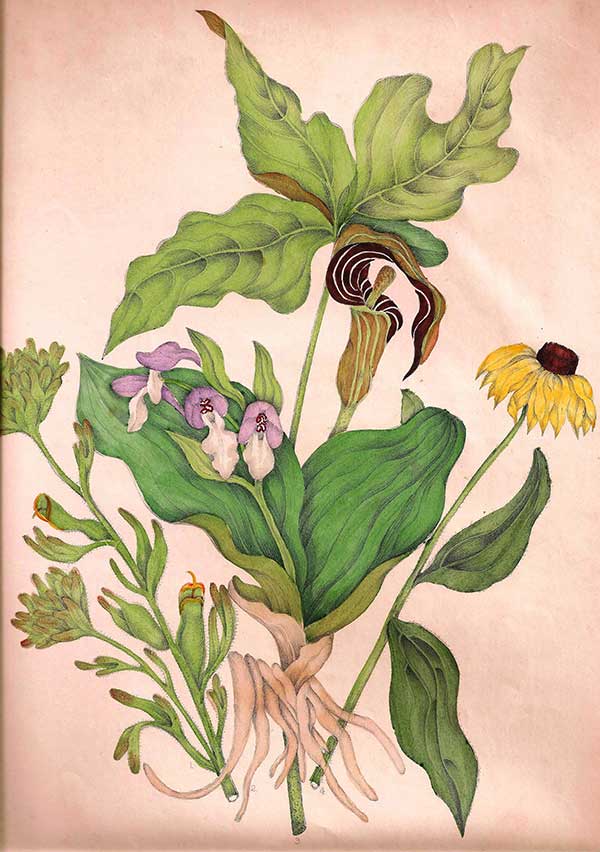It has been a week of snow days in Southern Ontario, and other parts of the country have been more winter-ish than spring-like, too. It’s a good time to curl up with a book, perhaps a gardening book or two. Or, for something cozier, maybe a vintage gardening book. Older gardening books that might have outdated (or prohibited) gardening practices can still be inspirational and offer a valuable link to our gardening past.
“Canadian Wild Flowers book: a labour of love 150 years ago” recounts the story of how one of this country’s early gardening books, Canadian Wild Flowers, written by Catharine Parr Traill and illustrated by her niece Agnes Dunbar FitzGibbon, came to be published. “Gardeners interested in the natural history of our home and native land — and its indigenous plant species — can’t do better than to read the works of Catharine Parr Traill, Canada’s first popular chronicler of our native flora and fauna,” writes Stephen Westcott-Gratton. To see a digital edition of the book (along with more beautiful illustrations), go to the Agnes Chamberlin Digital Collection at the Fisher Library.

A good word for ants
What do ants and soils do for each other? Quite a lot, actually. According to Soils Matter, an organization focused on soil science, ants help loosen soil, increase water infiltration and aerate soil when they build their nests. They also add organic matter to the soil while carrying dead and decayed materials around for food. Another bit of ant trivia for your next garden party: Ants represent nearly half of the world’s insect population.
Sowing seed in winter
I know, I’ve been going on about sowing seed for a few weeks now, but what other gardening can we accomplish at the moment? On his blog Growing with Plants, Matt Mattus offers some good advice regarding sowing tricky biennials, perennials, alpines, etc. in Winter Seed Sowing: Pros and Cons.
Some of Matt’s tips: make sure the advice you’re reading is based on a climate that’s similar to yours (for example, sweet peas are sown much earlier in Britain than they are in most of Canada); don’t assume seed for a cool-weather crop wants cold weather to germinate; sow thinly and sparingly.
Turnip goals
A Quebec gardener’s 64-pound (29-kg) turnip was named a Guinness World Record holder last week. “There are eight billion of us on Earth. I’m the only one who managed to make a big turnip like that,” Damen Allard of Carleton-sur-Mer said at the weigh-in last November. “It’s a bit exceptional.”
In fact, the cabinet maker grew two other record-breaking turnips last year, too.
Plant auctions
Here’s a neat fundraising idea for gardening organizations and great for gardeners looking for unusual plants. The Toronto Botanical Garden is starting monthly plant auctions; the first one will be Feb. 26. BC Rare Tropical Plants, which specializes in uncommon and rare tropical plants, will be TBG’s first partner.
Daphne correction
In last week’s newsletter, I described winter daphne (Daphne mezereum) as a broadleaved evergreen, which is incorrect. It’s a deciduous shrub.









